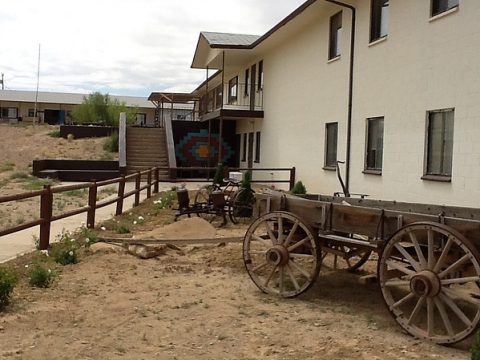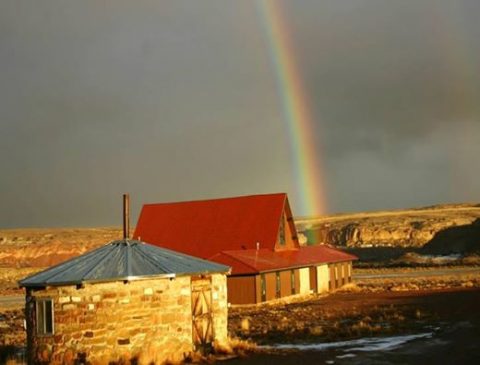 The Vision
The Vision
Lilakai (Lily) Julian Neil, a full-blooded Navajo, was born near Crownpoint, New Mexico, in 1900. At eighteen she became acquainted with Pastor and Mrs. Orno Follett at Lake Grove Mission. Lily studied the Bible in the Folletts' home and was baptized.
Because of Lily's untiring efforts to improve the lives of her people, she became increasingly influential, and she became the first woman elected to the Navajo Tribal Council. However, her greatest dream was to build a permanent Christian mission near her birthplace in the Tsaya/Lake Valley area.
One night Lily had a beautiful dream. She saw a big Circle of Light with Jesus standing in the center, clothed in shining garments. As she gazed at Him in adoration, He turned to look at her and smiled. Then Lily heard footsteps—many, many moccasinned footsteps—marching endlessly in the darkness, just outside the circle of light.
Then the scene gradually changed. Soon she saw more moccasinned feet, but this time they were young, dancing feet. Many of these smaller feet paused and turned, then walked into the circle of light where they were gladly welcomed by the smiling Savior.
Lily understood that the vision depicted the young people and children of her tribe as the hope of the Navajo Nation, and that many of them would turn from the old ways into the light, where happiness would surround the Jesus she loved.
From that time on, all her energies were dedicated to this cause. Sadly, due to a terrible car accident that permanently impaired her health, Lily didn’t live to see her dream come true. But she did see the birth of La Vida Mission.
The Name
Veda Scholder was another woman instrumental to the creation of La Vida Mission. She and Frankie Christensen made the drive from Farmington to the Tsaya area many times to put on Vacation Bible School and give Bible studies. La Vida Mission is named in Veda’s honor; in Spanish, la vida means "the life."
Realizing the Vision
The School, The Medical Clinic, & The Church
The property of La Vida Mission was once an abandoned trading post owned by Little Billie Bicente. In this one-room trading post, the little mission was born. School was held for six students in the crumbling, mice-infested building by Neal and Tillie Scott, who lived in the school building with their two tiny sons, Steven and Tom. Each day Tillie drove the rutted reservation roads to pick up her students, then returned them to their hogans at the end of the day. Their first year was a success. This was made possible by the concern and generosity of people who felt compelled to share the message of Christ with the Navajo.
The next year, Vic and Doris Starrett arrived with their daughter, Barbara, to share the burdens and responsibilities of the growing Mission. The school was moved to another rock building and the trading post, mice and all, was converted to a dormitory for the students so that they could stay at school all week.

A medical clinic was held for students and the community by doctors and dentists flying in from nearby Farmington and from Colorado. In 1964, the clinic moved into a small, donated trailer.
By 1966, a clinic building was built by volunteers—just as every building at the Mission has been built by volunteers. This building also served as a girls’ dorm, kitchen, and dining room. That same year a new school building was built. It housed two classrooms and a boys’ dorm. Though there were times the Mission struggled, it survived because of the concern and generosity of people who felt compelled to share the message of Christ with the Navajo.

Over the next few years, a new dormitory and a cafeteria were built to house the increase in students attending the school. Many of these Navajo students accepted Christ and brought their families into the Church as well. It soon became necessary to expand the school building by adding a library, a preschool and kindergarten room, and a music room.

